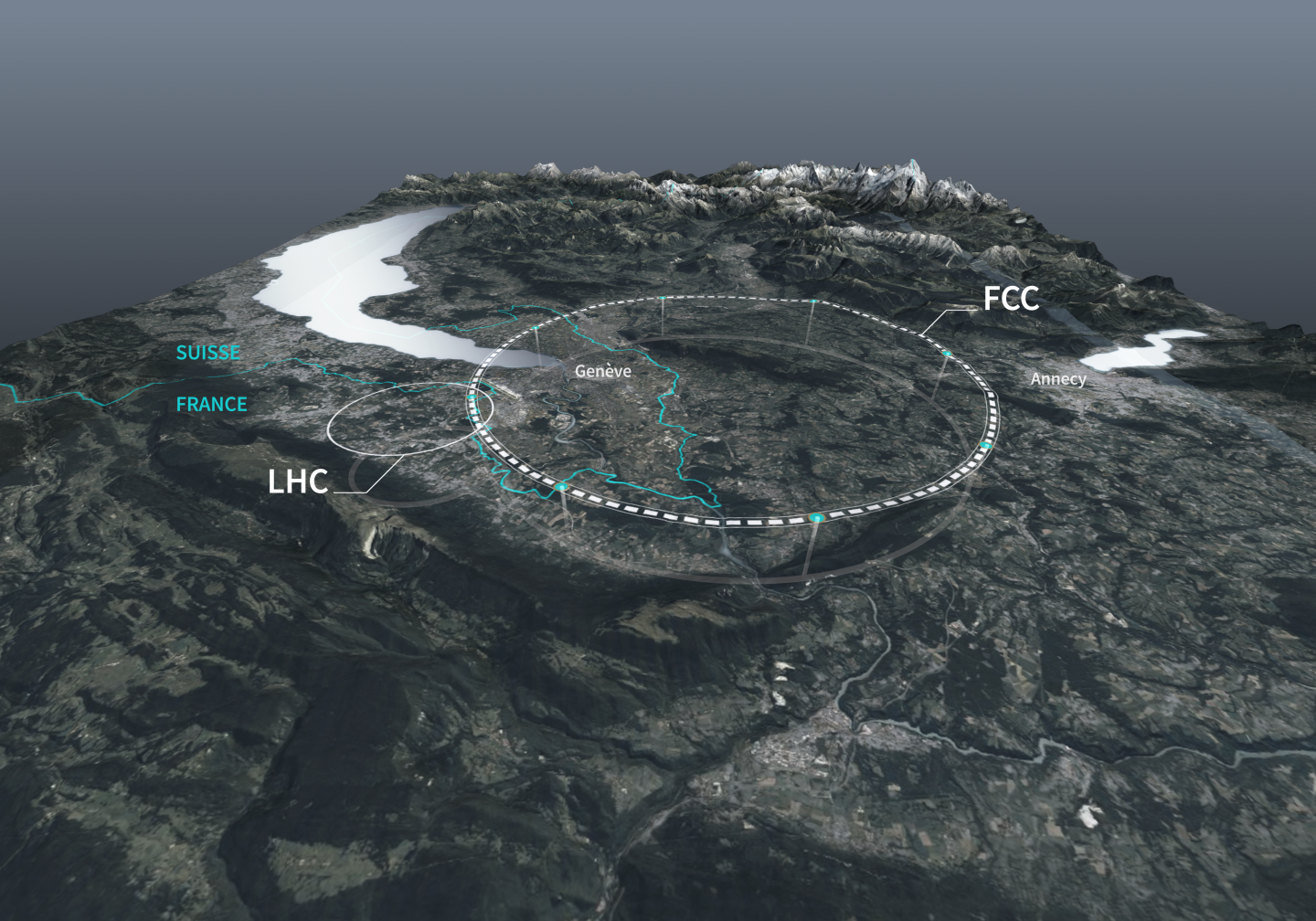The Future Circular Collider (FCC) Feasibility Study is developing a concept for a new research infrastructure to host the next generation of higher-performance particle colliders with the aim of extending the research currently being conducted at the LHC, once the HL-LHC reaches its conclusion, beyond 2040.
In 2021–2022, the EU-funded FCC Innovation Study* launched an international challenge-based competition called “Mining the Future”, which invited scientists and companies to propose innovative yet technically feasible solutions to turn the material excavated during the construction of FCC underground structures into a usable resource. The reuse potential of the excavation material is one of the factors that will contribute to the acceptability and cost efficiency of the FCC project.
The proposed solutions are now being integrated into a unique design and evaluated in the field, and will reach maturity by 2030. The objectives of the evaluations are twofold. Firstly, to establish how to conduct the online identification, sorting and pre-treatment of the materials during the excavation process. Secondly, to prepare different reuse pathways to sort and pre-treat materials, including transforming sterile rock – a soft and heterogeneous sedimentary rock called molasse – into fertile soil for agriculture, forestry and renaturation applications, in line with the principles of a circular economy. The quality-assured creation of fertile soil is a lengthy process spanning several years and has been chosen as the first large-scale experiment with field tests at an “Open Sky Laboratory”.

The Open Sky Laboratory, a plot of about 10 000 m2 located near LHC Point 5 (CMS, Cessy, France – see image), has been made available and will be prepared in collaboration with CERN’s SCE and EN departments. Molasse extracted during the HL-LHC excavations will be transported to this field to be used in the tests. Initial laboratory analyses will be performed off site to identify the most suitable mix of molasse and other materials. These will be followed by field tests in the Open Sky Laboratory’s controlled environment (monitoring of the field, weather and plant growth conditions), using scientific protocols developed by a collaboration of universities working in this domain.
In keeping with CERN’s long-standing tradition, this project relies on an open collaboration with academia and industry. Currently, the collaboration includes university and research experts in agronomy, pedogenesis and geology and industrial partners in soil engineering and phytoremediation, soil treatment techniques and monitoring and supervisory control systems.
A socioeconomic assessment of reuse cases for the transformed soil will be performed in order to evaluate the potential economic benefits for FCC construction and the potential advantages for the entire construction sector in Europe.
*Grant agreement 951754

